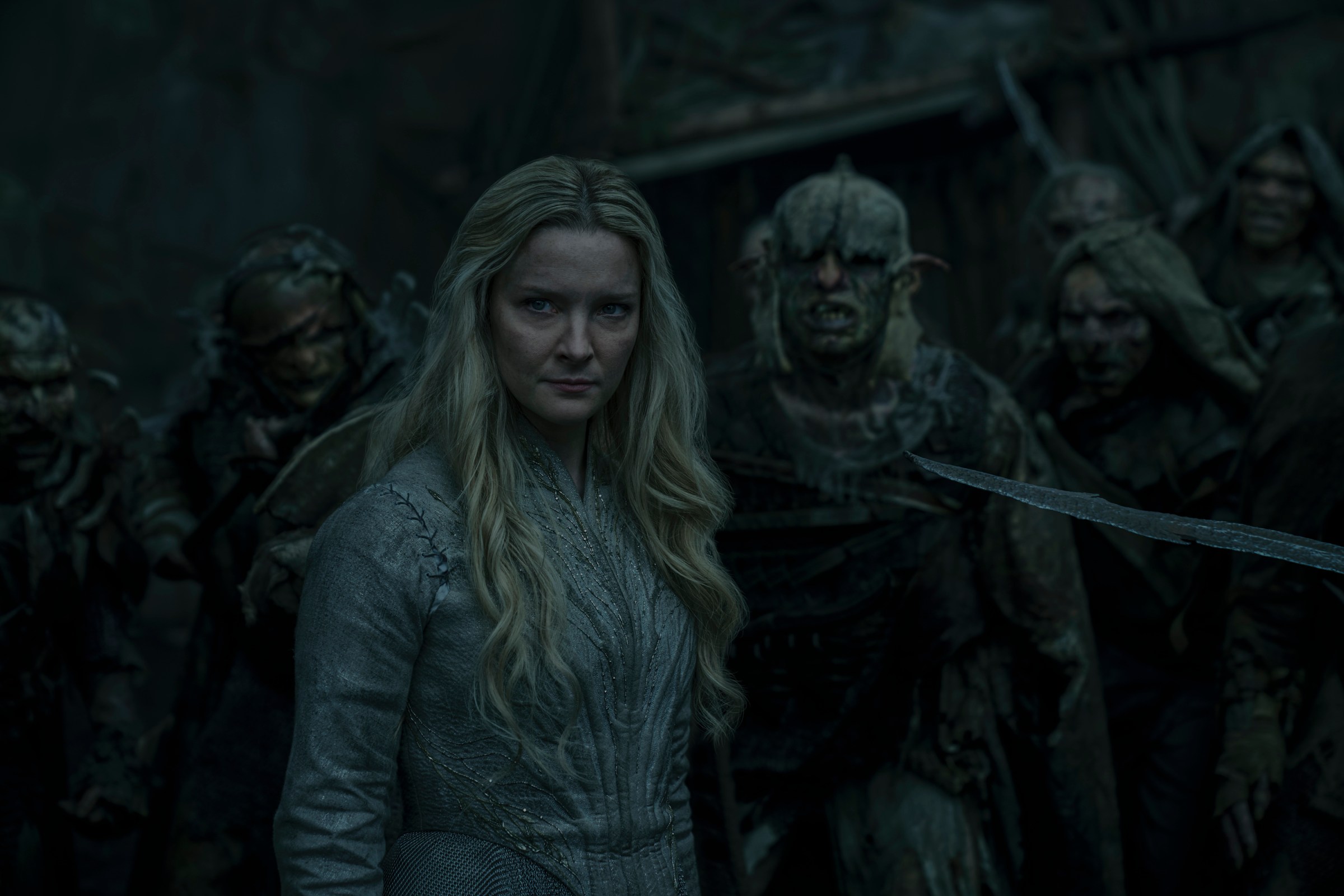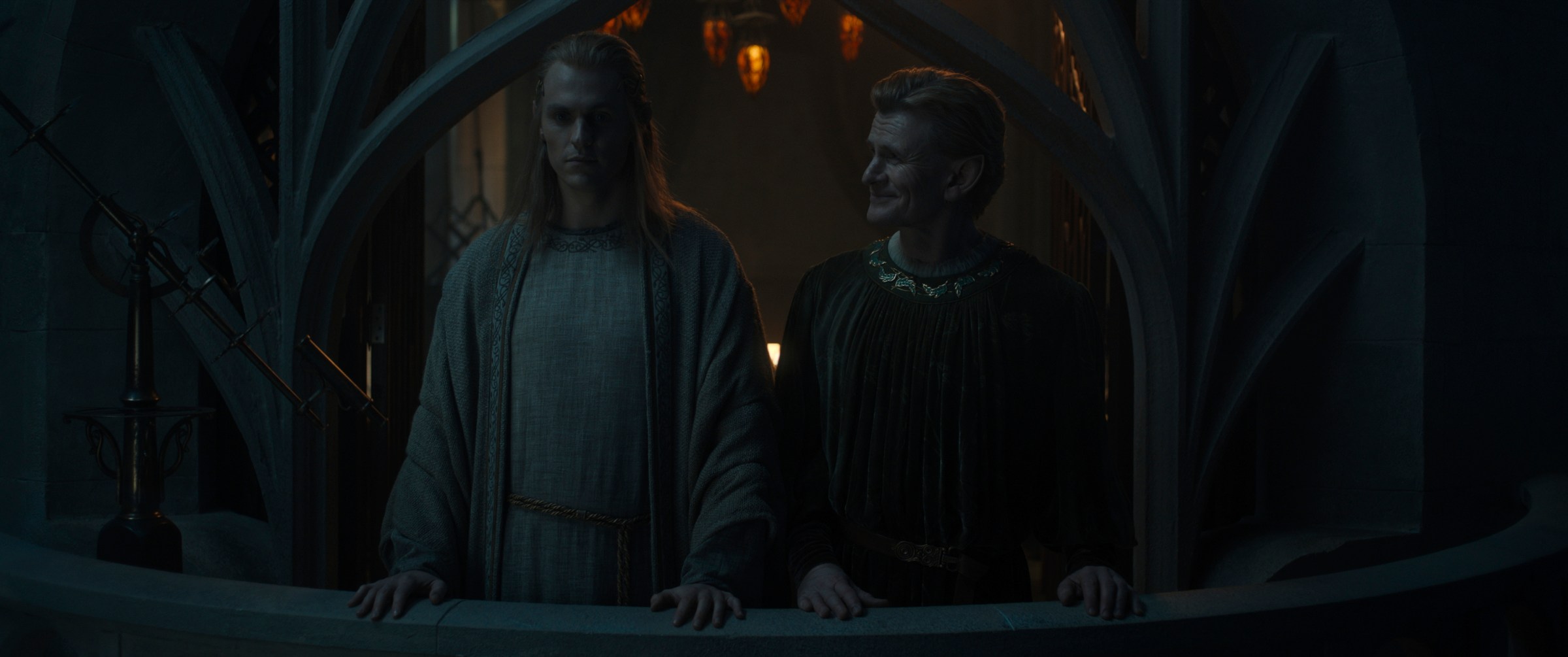The Rings of Power struggles to portray what power actually means
It makes sense that in a show called The Rings of PowerPower of all kinds would play a major role in the proceedings. This is especially true of Season 2, Episode 6, in which director Sanaa Hamri and writer Justin Doble divide the heroes and villains of The Lord of the Rings series into two camps: those who effectively wield power, and those who don’t. On the surface, this approach should work, neatly tying together the second season’s disparate storylines through a shared theme. And it does — to a point. But Episode 6’s fixation on power dynamics also results in The Rings of Power‘s least satisfying episodes in weeks, which ironically illustrates one of the series’ biggest weaknesses.
(Editor’s Note: This article contains spoilers for The Lord of the Rings: The Rings of Power season 2, episode 6.)
Don’t worry: I’m not going to harp on about this topic again. The Rings of Power‘s redundant storylines. At this point in the season, there’s nothing more to say on that front; here, at least, the arresting visuals conjured up by Hamri and the rest of the crew (Soaring shots of exotic vistas! A delightfully grotesque sea monster! Flaming boulders hurtling across the night sky!) help keep even the less-than-well-conceived plotlines in episode 6 moving along smoothly enough. That said, some of the episode’s plot developments warrant more exploration than others. And spoilers: none of those developments take place in the desert.
There is, however, one unfolding over (and under) the sea. That is where Míriel and Pharazôn engage in their final round of political arm wrestling for control of Númenor. On paper, the newly minted monarch Pharazôn should have the upper hand. He has already banished Míriel and is only one more ritual at sea away from taking Elendil off the board. That is, until Míriel pulls a Katniss Everdeen, enters the water on Elendil’s behalf, and emerges alive—and, seemingly, favored by the divine. A blind woman with few friends left wins back the (comically fickle) Númenórean public with a display of true power. That this then sends the anti-elf Pharazôn to a palantír for guidance only underscores how shallow his newfound authority really is compared to Míriel’s.
Unfortunately, the power struggle in Middle-earth is less positively charged. The villains outwit their benevolent counterparts as easily as a hobbit wolfs down his second breakfast. The meeting of the minds between Galadriel and Adar in episode 6 is a prime example of this. The elf-orc alliance set up in episode 5 proves to be a highly effective ruse, designed to trick Galadriel into divulging her information. It’s the latest low point for the elven warrior in a season of elves; her prowess on the battlefield apparently doesn’t translate to basic strategic acumen. If there’s one silver lining – aside from seeing Morfydd Clark and Sam Hazeldine sparring verbally – it’s that Adar himself is being played by Sauron. And like Galadriel, he should really see it coming.
One of the more interesting moments in the two’s back-and-forth banquet table comes when they compare notes on Sauron’s skills as a manipulator. “For a moment, he even makes you believe that his power has become yours,” Adar observes. “Irresistible power that makes possible the fulfillment of every desire.” And that’s exactly what the Dark Lord has done again: He’s convinced Adar that his ultimate goal—killing Sauron for good—is within reach. All Mordor’s current master has to do is wipe Eregion off the map. But as Galadriel eventually realizes, the only person who really benefits from this move is Sauron. He’ll reduce a great Elven stronghold to rubble without ever raising an army of his own, and he’ll leave the city with the last of the rings as he goes. Adar plays checkers; Sauron plays chess.
To be fair, he’s not the only poor soul who gets taught how to Real wielding power through Sauron. By the end of the episode, Celebrimbor is more under the control of “Annatar” than ever before, with a few flashes of defiance—and some instantly GIF-worthy sideways glances from the great Charles Edwards—proving no match for a healthy dose of magic-fueled gaslighting. As a result, it’s Sauron who ends up leading the defense of Eregion when Adar’s assault begins, just as he pleases. The same goes for Durin III, who sends Sauron home from Khazad-dûm empty-handed; for a moment it looks like Sauron has taken an L, only for us to realize it’s all part of the greater web he’s spinning. Sauron’s Balrog vibe (or whatever that fiery bit of foreshadowing was) combined with Charlie Vickers’ shit-eating grin leave us in no doubt that this is a man who also gets his power by doing nothing.
In some ways, it’s a further expansion of the more insidious, less overtly evil take on Sauron in Season 2, though it’s decidedly less effective this time around. Part of that is because Episode 6 largely drops the cosmic evil aspect of Sauron’s recent characterization in favor of the more grounded, “knowable” villain the showrunners have created. have insisted on giving us elsewhere this season. But more than that, it’s because The Rings of Power itself generally struggles with depicting power games and political games. This is not surprising. Sure, there is plenty of fun to be had in conflict between (and within) species — not to mention the precedent for both in the writings of J. R. R. Tolkien — but it is arguably not part of The Lord of the Ring‘core profession in the same way as in, say, House of the Dragon.
Yes, The Rings of Powerkind of/kind of non source material The Silmarillion draws much from the oath-taking of Celebrimbor’s ancestor Fëanor and the accompanying fucking. It (and The Lord of the Ring‘ Appendices) also exploit the folly of Pharazôn and his lackeys to good effect. Yet epic battles, legendary quests, and biblical parables are the bread and butter of Tolkien’s canon, not Westeros-esque intrigue and deep treatises on the true nature of (and philosophy behind) power. So, when The Rings of Power‘s creative team decides to cram this sort of thing into the show’s already overused narrative, it rarely works. On the contrary, things like Númenor’s gradual moral decline and Sauron’s continent-spanning machinations often feel contrived, rushed, and, worst of all, overly simplistic. In the case of the former, the show doesn’t even address the limited power of someone like Míriel to fight back against the power structures of her society — something that even Tolkien managed italbeit unconsciously (not everyone gets the chance to be Éowyn, in real life or in Middle-earth).
It’s as if those involved felt compelled to investigate what makes the people who call the shots (openly or otherwise) in Tolkien’s fantasy world tick, but they had no idea. rather enough insight — or the right IP — to pull it off. They also didn’t have the screen time necessary, which further undermines Episode 6’s power-centric commentaries by playing them with the 1.2x button firmly pressed. It’s frustrating, especially after the show’s recent run. But hey, Siege of Eregion is finally here, which means awkward meditations on power are out and blockbuster set pieces are in. Hopefully this shift will The Rings of Power Season 2’s final two episodes get back on track. After all, the show’s greatest strength — indeed, its undeniable strength — lies in bringing cinematic spectacle to the small screen.


